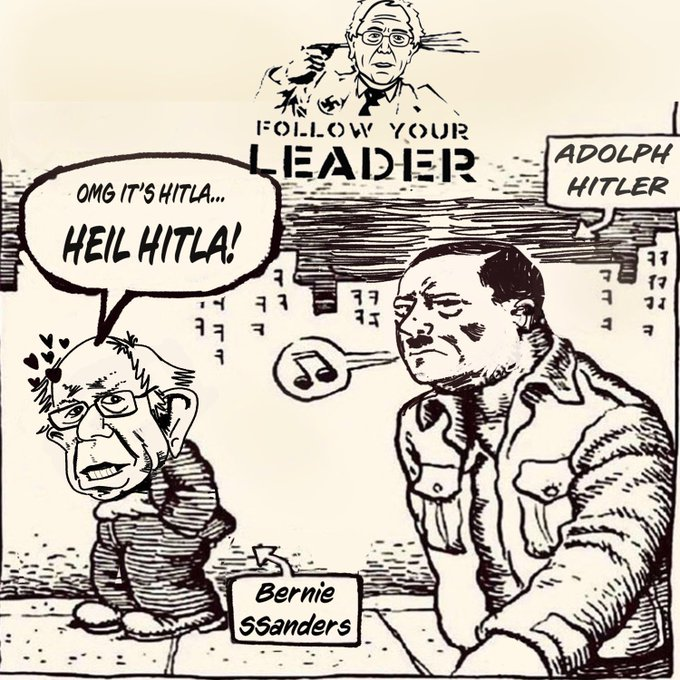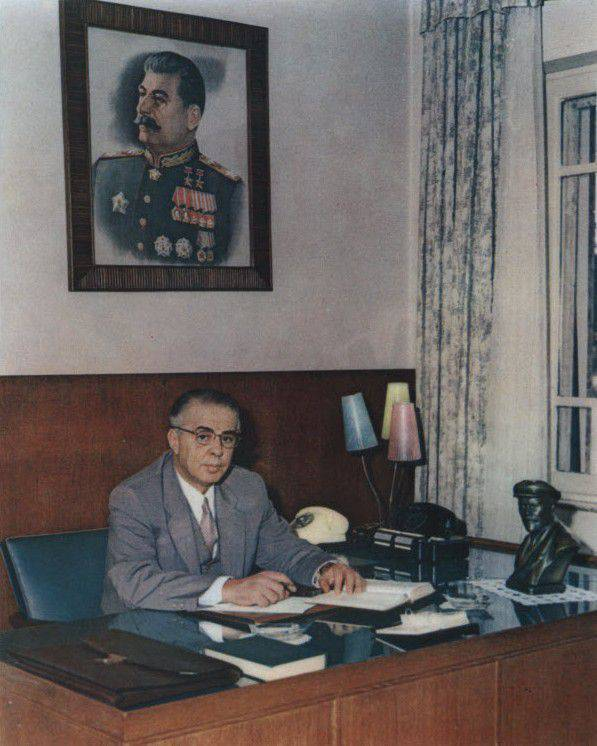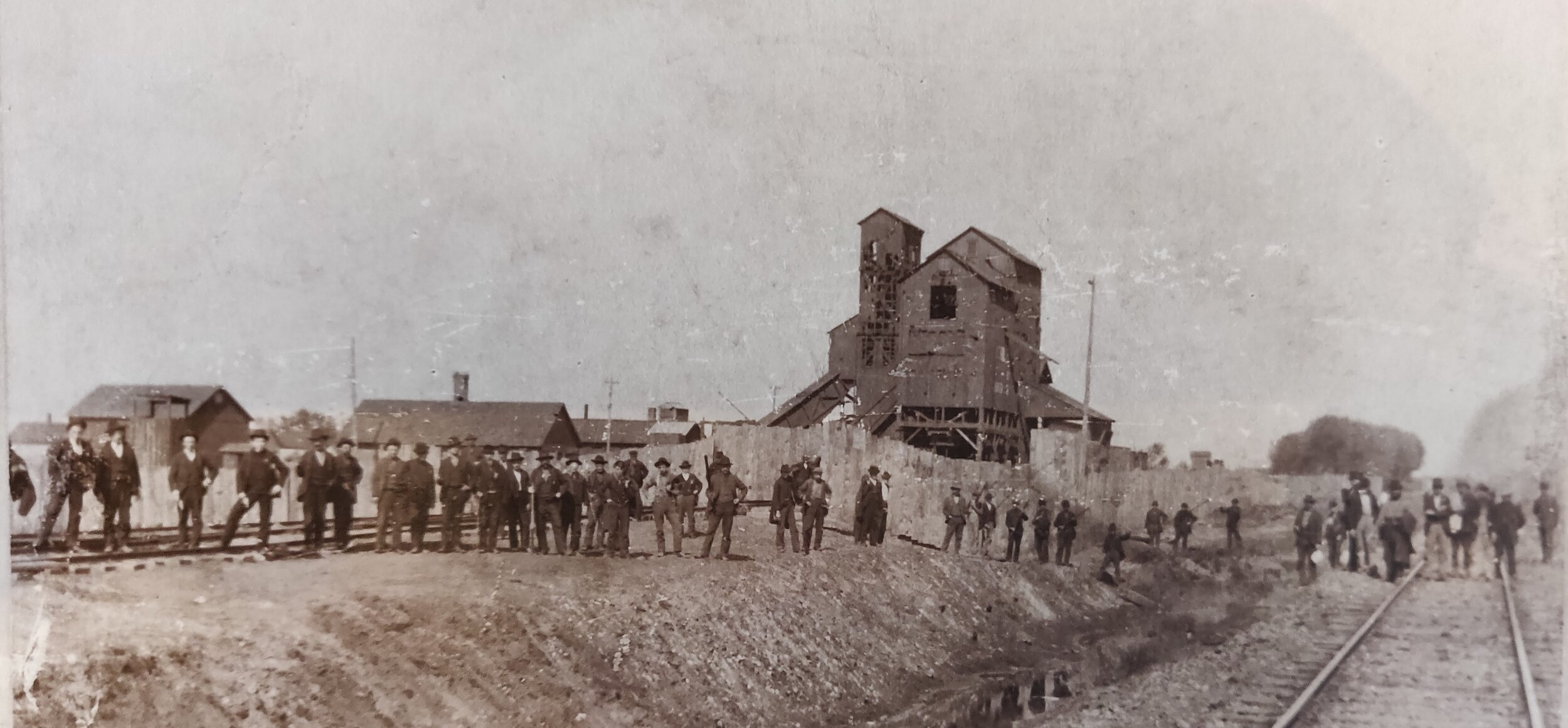
Another new thing about the new twitter update is that stalkers can keep stalking you since now block wont make your posts invisible to people you block
I think its because they think they have to go 100% on posting on bluesky and leave twitter in order to built a big following when i have seen many that just post on both and have grown quite fast especially with the open sign ups
All the poor artists and creators on Twitter.
Prior to today, you could opt out of having your posts used for AI / generative training. The new amended terms and conditions have made it impossible to do so.
Will this artist exodus make Blue$kkky better? probably not but it would be funny if it did

Enver Hoxha, born on this day in 1908, was the communist leader of Albania from 1946 to 1985, leaving behind a complex legacy of feminism and greatly improved access to healthcare and education. Hoxha is also known for having sharp ideological and political disagreements with the Soviet Union and communist Yugoslavia, siding most strongly with and receiving aid from Maoist China.
He was First Secretary of the Party of Labour of Albania from 1941 until his death in 1985, a member of its Politburo, chairman of the Democratic Front of Albania, and commander-in-chief of the Albanian People's Army. He was the twenty-second prime minister of Albania from 1944 to 1954 and at various times was both foreign minister and defence minister of the country.
Hoxha was born in Ergiri in 1908 and became a grammar school teacher in 1936. Following the Italian invasion of Albania, he joined the Party of Labour of Albania at its creation in 1941 in the Soviet Union.
Before coming into power, Hoxha was a French school teacher and librarian, becoming a communist partisan after fascist Italy invaded Albania in 1939. In March 1943, the first National Conference of the Communist Party elected Hoxha formally as First Secretary.
It was in this position as First Secretary that Hoxha became head of state after the Albanian monarchy was abolished in 1946.
Hoxha declared himself a Marxist–Leninist and strongly admired Soviet Leader Joseph Stalin. The Agrarian Reform Law was passed in August 1945. It confiscated land from beys and large landowners, giving it without compensation to peasants. 52% of all land was owned by large landowners before the law was passed; this declined to 16% after the law's passage.
The State University of Tirana was established in 1957, which was the first of its kind in Albania. The medieval Gjakmarrja (blood feud) was banned. Malaria, the most widespread disease, was successfully fought through advances in health care, the use of DDT, and through the draining of swampland. In 1938 the number of physicians was 1.1 per 10,000 and there was only one hospital bed per 1,000 people. In 1950, while the number of physicians had not increased, there were four times as many hospital beds per head, and health expenditures had risen to 5% of the budget, up from 1% before the war.
Under Hoxha's leadership, the Albanian literacy rate improved from 5-10% in rural areas to more 90%. Hoxha was also a proponent of women's rights, stating "the entire party and country should hurl into the fire and break the neck of anyone who dared trample underfoot the sacred edict of the party on the defense of women's rights". Accordingly, more than 175 times as many women attended secondary schools in 1978 than had done so in 1938.
Relations with Yugoslavia
At this point, relations with Yugoslavia had begun to change. The roots of the change began on 20 October 1944 at the Second Plenary Session of the Communist Party of Albania. The Session considered the problems that the post-independence Albanian government would face. However, the Yugoslav delegation which was led by Velimir Stoinić accused the party of "sectarianism and opportunism" and blamed Hoxha for these errors. He also stressed the view that the Yugoslav Communist partisans spearheaded the Albanian partisan movement.
Tito's position on Albania was that it was too weak to stand on its own and that it would do better as a part of Yugoslavia. Hoxha alleged that Tito had made it his goal to get Albania into Yugoslavia, firstly by creating the Treaty of Friendship, Co-operation and Mutual Aid in 1946. In time, Albania began to feel that the treaty was heavily slanted towards Yugoslav interests, much like the Italian agreements with Albania under Zog that made the nation dependent upon Italy
When Yugoslavia publicly broke with the Soviet Union, Hoxha's support base grew stronger. Then, on 1 July 1948, Tirana called on all Yugoslav technical advisors to leave the country and unilaterally declared all treaties and agreements between the two countries null and void
Relations with the Soviet Union
From 1948 to 1960, $200 million in Soviet aid was given to Albania for technical and infrastructural expansion. Albania was admitted to the Comecon on 22 February 1949 and served as a pro-Soviet force on the Adriatic.
Relations with the Soviet Union remained close until the death of Stalin in March 1953. Under Nikita Khrushchev, Stalin's eventual successor, aid was reduced and Albania was encouraged to adopt Khrushchev's specialisation policy. Under it, Albania would develop its agricultural output in order to supply the Soviet Union and other Warsaw Pact countries while they would be developing products of their own, which would, in theory, strengthen the Warsaw Pact. However, this also meant that Albanian industrial development, which was stressed heavily by Hoxha, would be hindered
In the years after Stalin's death, Hoxha grew increasingly distressed by the policies of the Soviet leadership and of Khrushchev in particular. China was also disillusioned with Soviet behavior at this time, and Hoxha found common ground with Mao Zedong's criticisms of Moscow. Hoxha and the PLA broke with the Soviet Union and formed a bloc with the Communist Party of China in denouncing the post-Stalin USSR as "revisionist" and "social-imperialist" . (See, for example, his speech at the Meeting of 81 Communist Parties in Moscow in 1960, "Reject the Revisionist Theses of the XX Congress of the CPSU and the Anti-Marxist Stand of Krushchev's Group! Uphold Marxism-Leninism!".)
By 1961 Hoxha's attacks on the "revisionist" Soviet leadership had so infuriated Khrushchev that he elected first to terminate Moscow's economic aid to Albania and ultimately to sever diplomatic relations entirely.
Relations with China
However, Hoxha's relations with the Maoists were not entirely smooth. For one thing they had differing notions of "protracted people's war." Mao and his followers world-wide insisted that in peasant countries urban insurrection must occur in the last stages of the revolutionary war, which until then would have the countryside as its theater of operations. Hoxha insisted, on the other hand, that the cities ought not to be left until last but that actions must be carried out simultaneously in city and countryside. As revolutionary movements gathered momentum in Latin America, Africa, and Asia, continents with large rural populations, these issues were at the center of intense debates between "Hoxhaists" and Maoists.
At the start of Albania's Third Five-year Plan, China offered Albania a loan of $125 million which would be used to build twenty-five chemical, electrical and metallurgical plants in accordance with the Plan. However, the nation discovered that the task of completing these building projects was difficult, because Albania's relations with its neighbors were poor and because matters were also complicated by the long distance between Albania and China.
The financial aid which China provided to Albania was interest-free and it did not have to be repaid until Albania could afford to do so. China never intervened in Albania's economic output, and Chinese technicians and Albanian workers both worked for the same wages.
During the Cultural Revolution, China entered into a four-year period of relative diplomatic isolation, however, its relations with Albania were positive. Albania's relations with China began to deteriorate on 15 July 1971, when United States President Richard Nixon agreed to visit China in order to meet with Zhou Enlai. Hoxha believed that China had betrayed Albania.
The result of this criticism was a message from the Chinese leadership in 1971 in which it stated that Albania could not depend on an indefinite flow of aid from China. Following Mao's death on 9 September 1976, Hoxha remained optimistic about Sino-Albanian relations, but in August 1977, Hua Guofeng, the new leader of China, stated that Mao's Three Worlds Theory would become official foreign policy. Hoxha viewed this as a way for China to justify having the U.S. as the "secondary enemy" while viewing the Soviet Union as the main one, thus allowing China to trade with the U.S.
Eventually, Hoxha broke with China in 1978. In that year he published Imperialism and the Revolution, in which he declared that Mao Zedong was not a Marxist-Leninist and that there were no Marxist-Leninists in China. From then on, Hoxha's declared that Albania not only would become a model socialist republic on its own, but that it was the only socialist country left in the world.
On 13 July 1978, China announced that it was cutting off all of its aid to Albania. For the first time in modern history, Albania did not have an ally and it also did not have a major trading partner.
During this period, Albania was the most isolated country in Europe. In 1983, Albania imported goods which were worth $280 million but it exported goods which were worth $290 million, producing a trade surplus of $10 million.
In 1973, Hoxha suffered a heart attack from which he never fully recovered. In increasingly precarious health from the late 1970s onward, he turned most state functions over to Ramiz Alia. Hoxha was succeeded by Ramiz Alia, who oversaw the fall of communism in Albania.
Megathreads and spaces to hang out:
- 📀 Come listen to music and Watch movies with your fellow Hexbears nerd, in Cy.tube
- 🔥 Read and talk about a current topics in the News Megathread
- ⚔ Come talk in the New Weekly PoC thread
- ✨ Talk with fellow Trans comrades in the New Weekly Trans thread
- 👊 Share your gains and goals with your comrades in the New Weekly Improvement thread
reminders:
- 💚 You nerds can join specific comms to see posts about all sorts of topics
- 💙 Hexbear’s algorithm prioritizes comments over upbears
- 💜 Sorting by new you nerd
- 🌈 If you ever want to make your own megathread, you can reserve a spot here nerd
- 🐶 Join the unofficial Hexbear-adjacent Mastodon instance toots.matapacos.dog
Links To Resources (Aid and Theory):
Aid:
Theory:

Growing up in Norway you're inundated with the idea that Norway was dirt-poor until the discovery of oil in 1969, but this is a really misleading picture.
Bibliography:
- Å. Cappelen, et. al. “Leting etter olje og gass: Effekter på norsk økonomisk velferd” (2024)
- Greenpeace Norge, “11 ting equinor ikke vil du skal vite” greenpeace.org, Feb. 24th, 2023.
- B. Haugan, “Forsker: så lite gir det å lete videre etter olje” vg.no, Sep. 11th, 2023.
- K. Heidar, “Elites on Trial: Norway” (2001)
- H. Heldahl, “MDG ut mot “oljepropaganda og grønnvasking” fra Equinor” nettavisen.no, 09.09.21.
- M. Rasmussen & C. Knutsen “Reforming to Survive” (2022)
- B. Risan, “Ulovlig Overvåket” Mar. 19th, 2003. Nrk.no
- P. Sandvik, “Nasjonens Velstand 2. ed.” (2022)
- L. Sangolt, et. al. “Norway: Nature, Industry and Society” (2013)
- O. Skauby, “Stopp i leting etter olje og gass har en høy pris” sodir.no, Mar. 11th, 2024. (updated 06.05.2024)
- O. Stugu, “Norsk Historie: Etter 1905” (2012)
- S. Wilhelmsen, “Equinor produserer 0,15 prosent fornybar energi” greenpeace.org, Mar. 22nd, 2024.
The genocide started 100 years ago but please crackkker tell how the settler racial proyect war against the indigenous people is actually about religion
There is also someone there claiming the palestinians are ottomans
 to comrade @Cowbee@hexbear.net fighting in the frontlines
to comrade @Cowbee@hexbear.net fighting in the frontlines

- Before the arrival of European colonizers, rural societies in the Amazon Basin domesticated plants and developed agricultural practices and infrastructure which provided supplies of food and fiber and improved crop yields.
- As missionaries and the expansion of trade brought pathogens into communities which lacked immunity, the number of Indigenous people across the Amazon dropped drastically in the fifteenth and sixteenth centuries, from an estimated 4 to 15 million people to about 400,000.
- In Brazil, a population census in the early 1990s showed an increase of Indigenous population, indicating higher birth rates and increased Indigenous self-identification. Boosting the latter across the Amazon Basin requires policies that prioritize the formalization of land rights of communities with specific ethnic heritage.
Prior to the arrival of Europeans, the Amazonian lowlands were home to several hundred ethnic groups living in tens of thousands of villages with a population estimated at between four and fifteen million inhabitants. Over millennia, these societies transformed landscapes along the main stem of the Amazon River and its major southern tributaries by developing agricultural practices that created dark earth soils, a technology that improved the physical and chemical properties of tropical soils, increased their productivity and ensured their sustainable use over centuries.
Tragically, all of these societies collapsed in the fifteenth and sixteenth and centuries, when epidemics caused by pathogens introduced during the Colombian Exchange burned through their communities. Although archaeology has yet to discover all the gruesome details, these societies were particularly susceptible to pandemics because of their relatively high population density and a trade network that promoted cultural interactions. The population is believed to have fallen to fewer than 400,000 individuals in a cataclysmic demographic collapse.
The rubber boom of the late nineteenth century led to another round of decimation, as Indigenous communities were enslaved, displaced or massacred. Most survived as ethnic entities by fleeing deeper into the forest, occupying forest landscapes along tertiary tributaries or remote valleys in the Andean foothills and Guiana highlands. Anthropologists estimate that Amazonian Brazil had a population of only about 100,000 Indigenous people in the mid-1970s.
- The WAP Complex of protected areas that straddles the border region of Benin, Burkina Faso and Niger is one of West Africa’s most important protected areas and a haven for many iconic endangered species.
- Servals, caracals and African wildcats are also found in the WAP Complex, but almost nothing is known about their status, distribution, ecology or threats.
- Covert surveys of medicine markets in the region have found serval and caracal skins, though it’s not known if the skins originated within the WAP Complex.
- The presence of jihadist militants in the region severely impacts conservation and research, particularly in the Niger and Burkina Faso portions of the complex.
In the border region between Benin, Niger and Burkina Faso lies a network of protected areas that form one of the largest intact wildernesses in West Africa. The W-Arly-Pendjari (WAP) Complex is a mosaic of gallery forests, savannas and riparian habitats, and the last refuge for many of the region’s most iconic species, including West African lions (Panthera leo leo), savanna elephants (Loxodonta africana) and cheetahs (Acinonyx jubatus).
With conservation focused on these threatened and beloved species, it’s easy for the small cats to get lost. There are three species of small cats — servals (Leptailurus serval), caracals (Caracal caracal) and African wildcats (Felis lybica) — in the WAP complex. Though all three have a conservation status of least concern on the IUCN Red List, there are few hard facts about their numbers in the WAP Complex or West Africa. With continuing insecurity plaguing the region, and little money for small cat research, these species risk falling even further into obscurity.
At the heart of the WAP Complex lie three strictly protected areas: Pendjari National Park in Benin, Arly National Park in Burkina Faso, and W Regional Park, which straddles the Benin, Burkina Faso and Niger border region. Together, these parks, along with adjoining hunting zones, wildlife reserves and areas under other forms of protection, cover 34,000 square kilometers (13,100 square miles). The core area, about half of it, is a UNESCO World Heritage Site.
Over the past few years, the region has been plagued by insecurity. Jihadist militants are entrenched in the Burkina Faso and Niger portions of the complex, with violence increasingly spilling over into Benin. Conservation work has become difficult and dangerous, though South Africa-based organization African Parks, which manages Pendjari National Park and the Benin portion of W, still carries out some biomonitoring activities, says Jacques Kougbadi, marketing and communications coordinator for African Parks.
Disco Elysium is a 2019 role-playing video game developed and published by ZA/UM. Inspired by Infinity Engine-era games, particularly Planescape: Torment, the game was written and designed by a team led by Estonian novelist Robert Kurvitz and features an art style based on oil painting with music by the English band British Sea Power.
Disco Elysium takes place in the seaside district of a fictional city still recovering from a revolution that occurred decades prior to the game's start. Players take the role of an amnesiac detective who has been tasked with solving a murder mystery. During the investigation, he comes to recall events about his own past as well as current forces trying to affect the city. Disco Elysium was released for Windows in October 2019 and macOS in April 2020. An expanded version of the game featuring full voice acting and new content, subtitled The Final Cut, was released for consoles in 2021 alongside a free update for the PC versions.
Disco Elysium is a non-traditional role-playing game featuring very little combat. Instead, events are resolved through skill checks and dialogue trees via a system of 24 skills that represents different aspects of the protagonist, such as his perception and pain threshold. In addition, a system called the Thought Cabinet represents his other ideologies and personality traits, with players having the ability to freely support or suppress them. The game is based on a tabletop role-playing game setting that Kurvitz had previously created, later forming ZA/UM in 2016 to adapt it into a video game.
Disco Elysium has been cited as among the greatest video games ever made, with its narrative and art being praised. It won a number of awards from several publications, including Game of the Year. A television series adaptation was announced to be in development in 2020.
Gameplay
Disco Elysium is a role-playing video game that features an open world and dialogue-heavy gameplay mechanics. The game is presented in an isometric perspective in which the player character is controlled. The player takes the role of a detective, who suffers from alcohol and drug-induced amnesia, on a murder case. The player can move the detective about the current screen to interact with non-player characters (NPC) and highlighted objects or move onto other screens. Early in the game they gain a partner, Kim Kitsuragi, another detective who acts as the protagonist's voice of professionalism and who offers advice or support in certain dialogue options.
Setting
Disco Elysium takes place in the fantastic realist world of Elysium, developed by Kurvitz and his team in the years prior, which includes over six thousand years of history. The fiction has been constructed with attention to the theory of historical materialism, which posits that, even if the details were different, human history would play out in a similar way
The game takes place in the year '51 of the Current Century. Elysium is made of "isolas", masses of land and sea that are separated from each other by the Pale, an inscrutable, mist-like "connective tissue" in which the laws of reality break down. Prolonged exposure to the Pale can cause mental instability and eventually death, and traversing the Pale, which is typically done with aerostatics, is heavily regulated due to the danger
Events in the game take place in the impoverished district of Martinaise within the city of Revachol on the isola of Insulinde, the "New New World". Forty-nine years before the events of the game, a wave of communist revolutions swept multiple countries; the Suzerainty of Revachol, a monarchy that up to that point had been Elysium's pre-eminent superpower, was overthrown and replaced by a commune. Six years later, the Commune of Revachol was toppled by an invading alliance of moralist-capitalist nations called "the Coalition". Revachol was designated a Special Administrative Region and remains firmly under Coalition control decades later. One of the few governmental responsibilities that the Coalition concedes to the people of Revachol is policing, which is carried out by the Revachol Citizens Militia (RCM), a voluntary citizens' brigade turned semi-professional police force.
Development
Disco Elysium was developed by ZA/UM, a company founded in 2016 by Estonian novelist Robert Kurvitz, who served as the game's lead writer and designer. Kurvitz since 2001 had been part of a band called Ultramelanhool, and in 2005, while in Tallinn, Estonia, with the group struggling for finances, conceived of a fictional world during a drunken evening while listening to Tiësto's "Adagio for Strings". Feeling they had a solid idea, the group created a collective of artists and musicians, which included oil painter Aleksander Rostov, to expand upon the work of that night and developed a tabletop RPG based on Dungeons & Dragons on this steampunk-like concept
Kender suggested to Kurvitz that instead of pursuing a novel, that he try capturing his world as a video game as to draw a larger interest. Kurvitz had no experience in video games before, but once he had seen artwork of the game's setting of Revachol as easily fitting into an isometric format, as well as Rostov's agreement that they might as well continue taking the risk of failing on a video game together, Kurvitz proceeded with the idea.
The game was announced as an upcoming 2017 game under the title No Truce With the Furies, taken from the poem "Reflections" by R.S. Thomas and published in Thomas' No Truce with the Furies in 1995
Kurvitz established the ZA/UM team to create the game, using the name "za um", a reference to the Zaum constructed language created by Russian avant-garde poets in the early 1900s. Its name can be read in Russian as a shortcut for "vzyatsya za um" idiom, which is similar to the English idea of bootstrapping. The use of all-capitals and the slash symbol is to present the team as "something that definitely exists and weighs eight tonnes".
Work on the game started around 2016, with the local team living in a squat in a former gallery in Tallinn. They were able to secure venture capital into the game during that first year which allowed Kurvitz to seek out the English band Sea Power for their music for the game's soundtrack. While in Birmingham to speak to the band, Kurvitz realised England was a better location for the main development team as there were more local resources for both development and for voice-overs.
As originally planned, the game was to focus on action in a single city location to make the 2017 release. However, as ZA/UM had indicated to investors that this was to be a game that spanned a larger world, they found the need to spread beyond that single location, forcing them to delay the game's release, along with the name change to Disco Elysium. This title plays on a few double meanings related to the word "disco"; in one sense, it refers to ideas that briefly gain the spotlight before burning out similar to the fad of disco music, and reflected in the protagonist's clothing style, while in a more literal sense, "disco" is Latin for "I learn", thus reflecting on the protagonist's overcoming his amnesia to learn about the world of Elysium. Kurvitz had always anticipated the No Truce title to be more of a working title and wanted to reserve it for when they had bundled Disco Elysium with a second planned game
Design, voices, and influences
The game's art, drawn mostly in a painterly style, was led by Aleksander Rostov, while the game's soundtrack was written by the English band British Sea Power. The original release also had voice-acting by Dasha Nekrasova of the cultural commentary podcast Red Scare and four of the hosts from the political satire podcast Chapo Trap House; these would later be replaced in The Final Cut.
ZA/UM cited several works that influenced the writing and style of Disco Elysium. One major influence is the 1999 video game Planescape: Torment, which, like Disco Elysium, features an amnesiac player character, heavily emphasises dialogue, and is rendered isometrically. The television show The Wire was also used as an influence for the game's working class setting, while Émile Zola's writings shared stories on the misery of human life that narrative writer Helen Hindpere said she felt resonated within the game. Other works that influenced Disco Elysium included the video game Kentucky Route Zero; television shows True Detective and The Shield; the literary works of Dashiell Hammett, China Miéville, and the Strugatsky brothers; and artists Rembrandt, Ilya Repin, Jenny Saville, Alex Kanevsky, and Wassily Kandinsky. The creators have also said that their work owes a lot to the Estonian urbanist poet Arvi Siig. Kurvitz said while accepting the Estonian President's Young Cultural Figure annual award for 2020 "Without his modernism, Elysium – the world the game is placed in – would not be half of what it is." He also said Siig's vision of an international, radical and humanist Estonian culture lives on in Disco Elysium.
Kurvitz said that an aim was to have a full, complex depth of choices and outcomes, limited by the practicalities of game development. Knowing they could not realistically cover all possible choices, Kurvitz and his team instead focused more on what he called "microreactivity", small acts and decisions the player may make such as an embarrassing comment, and how that may propagate throughout events. The dialogue of the player's various skills helped then to provide critique and internalisation of how these small decisions had larger effects on the game world, so that the player would become more aware of such choices in the future. An additional factor in writing was the recognition that there was no real solution to the game; while the player may resolve some portions of the story, the primary case is nearly unworkable, similar to the rest of Revachol. They created the companion Kim as a no-nonsense character to help keep the player on track of resolving some part of the game and recognising that there were some story threads they simply could not fix or resolve.
Megathreads and spaces to hang out:
- 📀 Come listen to music and Watch movies with your fellow Hexbears nerd, in Cy.tube
- 🔥 Read and talk about a current topics in the News Megathread
- ⚔ Come talk in the New Weekly PoC thread
- ✨ Talk with fellow Trans comrades in the New Weekly Trans thread
- 👊 Share your gains and goals with your comrades in the New Weekly Improvement thread
reminders:
- 💚 You nerds can join specific comms to see posts about all sorts of topics
- 💙 Hexbear’s algorithm prioritizes comments over upbears
- 💜 Sorting by new you nerd
- 🌈 If you ever want to make your own megathread, you can reserve a spot here nerd
- 🐶 Join the unofficial Hexbear-adjacent Mastodon instance toots.matapacos.dog
Links To Resources (Aid and Theory):
Aid:
Theory:

It appears another "gigaleak" has gone down, involving Nintendo. According to sources online, it appears that Game Freak has been hacked, resulting in internal data from the company being leaked to the public. Those involved in the hacking community or those within general Pokemon related groups are claiming that while they will not be discussing or dissecting the specifics within the leak, it initially is being claimed that there is a total of 1TB of data.
This allegedly includes the source code for Pokemon Platinum, source codes for Pokemon HeartGold and SoulSilver, beta builds of Pokemon Black and White 2, beta builds of Pokemon X and Y, and potential internal codenames for upcoming Pokemon projects. Within it are mentions of an online Pokemon game, a collaborative project between Game Freak and Studio ILCA, the potential code name of the Nintendo Switch 2 being "Ounce", and a project named Gaia, which may be the next generation of Pokemon titles.
On this day in 1898, the Battle of Virden began when armed members of the United Mine Workers of America (UMW) surrounded a train full of strikebreakers and exchanged fire with company guards. 13 people were killed, dozens more wounded.
After a local chapter of the UMW began striking at a mine in Virden, Illinois, the Chicago-Virden Coal Company hired black strikebreakers from Birmingham, Alabama and shipped them to Virden by train.
The company hired armed detectives or security guards to accompany the strikebreakers, and an armed conflict broke out when armed miners surrounded the train as it arrived in town. A total of four detectives and seven striking mine workers were killed, with five guards, thirty miners, and an unrecorded number of strikebreakers wounded.
After this incident, Illinois Governor John Tanner ordered the National Guard to prevent any more strikebreakers from coming into the state by force. The next month, the Chicago-Virden Coal Company relented and allowed the unionization of its workers.
"When the last call comes for me to take my final rest, will the miners see that I get a resting place in the same clay that shelters the miners who gave up their lives on the hills of Virden, Illinois...They are responsible for Illinois being the best organized labor state in America."
Mother Jones
Megathreads and spaces to hang out:
- 📀 Come listen to music and Watch movies with your fellow Hexbears nerd, in Cy.tube
- 🔥 Read and talk about a current topics in the News Megathread
- ⚔ Come talk in the New Weekly PoC thread
- ✨ Talk with fellow Trans comrades in the New Weekly Trans thread
- 👊 Share your gains and goals with your comrades in the New Weekly Improvement thread
reminders:
- 💚 You nerds can join specific comms to see posts about all sorts of topics
- 💙 Hexbear’s algorithm prioritizes comments over upbears
- 💜 Sorting by new you nerd
- 🌈 If you ever want to make your own megathread, you can reserve a spot here nerd
- 🐶 Join the unofficial Hexbear-adjacent Mastodon instance toots.matapacos.dog
Links To Resources (Aid and Theory):
Aid:
Theory:

After the completion of a land transfer from Honeywell International on Sept. 30, the Onondaga Nation reclaimed over 1,000 acres of their historic land, which include the pristine headwaters of Onondaga Creek and a bounty of native wildlife and natural medicines.
Hill, the Tadodaho of the Onondaga Nation, remembers swimming in the creek water as a child. Nowadays, Hill said, children don’t swim in the creek, whose downstream waters are brown and murky. Those downstream waters run full with silt and other deposits from mud boils, caused by salt mining.
“You have Onondaga Creek, you have Onondaga Lake. Can’t use these places,” Hill said. “I’m an Onondaga. What’s that tell you?”
Here, however, in the land the Onondagas reacquired, dozens of headwaters remain clean, clear and cold – safe for consumption, and ideal for native brook trout to thrive.
The 1,000 acres — two separate 758-acre and 256-acre parcels — are a mere fraction of the 2.5 million acres guaranteed to the Onondagas in treaties with the US government. This title transfer, though, represents a critical milestone in the Nation’s ongoing battle to regain its ancestral lands.
The transfer of land followed a 2022 resolution from the The U.S. Fish and Wildlife Service and New York State Department of Environmental Conservation that came as part of a broader plan to restore Onondaga Lake. The agencies directed Honeywell International, the corporation that owned the land, to cede the title of the parcels to the Onondaga Nation.
For more than half a century, Honeywell conducted solution salt mining, a process in which water is pumped underground to dissolve salt and push the brine to the surface. Decades of mining depleted the soil, leaving massive vacuums where the salt once was.
A year ago, Palestinians began to experience new levels of their ongoing catastrophe, the Nakba, which started 76 years ago. In response to the attack that killed roughly 1,200 Israelis and caused a major embarrassment to the Israeli army and intelligence, Israel unleashed an extermination campaign on Gaza, leveling entire residential blocks, destroying education and health institutions, eliminating the basic infrastructure needed to sustain a society, and burying entire families under the rubble.
In the West Bank, Israeli settlers set out to forcibly expel Palestinian rural communities and steal the lands of Palestinian towns and villages. The Israeli army ramped up its spree of raids on refugee camps, destroying their infrastructure, and systematically forcing inhabitants to live in a situation similar to the one lived in Gaza.
I have lived in Palestine almost all my life. The Nakba has always been part of my consciousness. Its continuity has been my reality. However, there are particular dimensions to the experience of living the Nakba that I had never known, except in the memories of those who lived in its early years. My father, who grew up in the 1950s and 1960s, always struggles to contain his tears when he describes the refugee families, expelled from West Jerusalem, Lydd, Ramleh, and their surrounding villages, and how they were still sleeping in stables and caves in our hometown in the late 1950s because all the houses were taken.
He would describe how they had lost all their possessions and were forced into underpaid labor in the fields to sustain themselves, how some of their children had bare floors for beds, and how they had gradually started to become part of the town’s social fabric. Some of them, with peasant origins, took their sick children to the church in our Christian town and, despite being Muslims, had them baptized out of simple religiosity, imploring the Virgin, the saints, and the prophet Muhammad to heal them because they couldn’t afford medical care.



Silly nerds, he is only a tankie if he comes from the Tank District of Pakistan, otherwise its a sparkling marxist